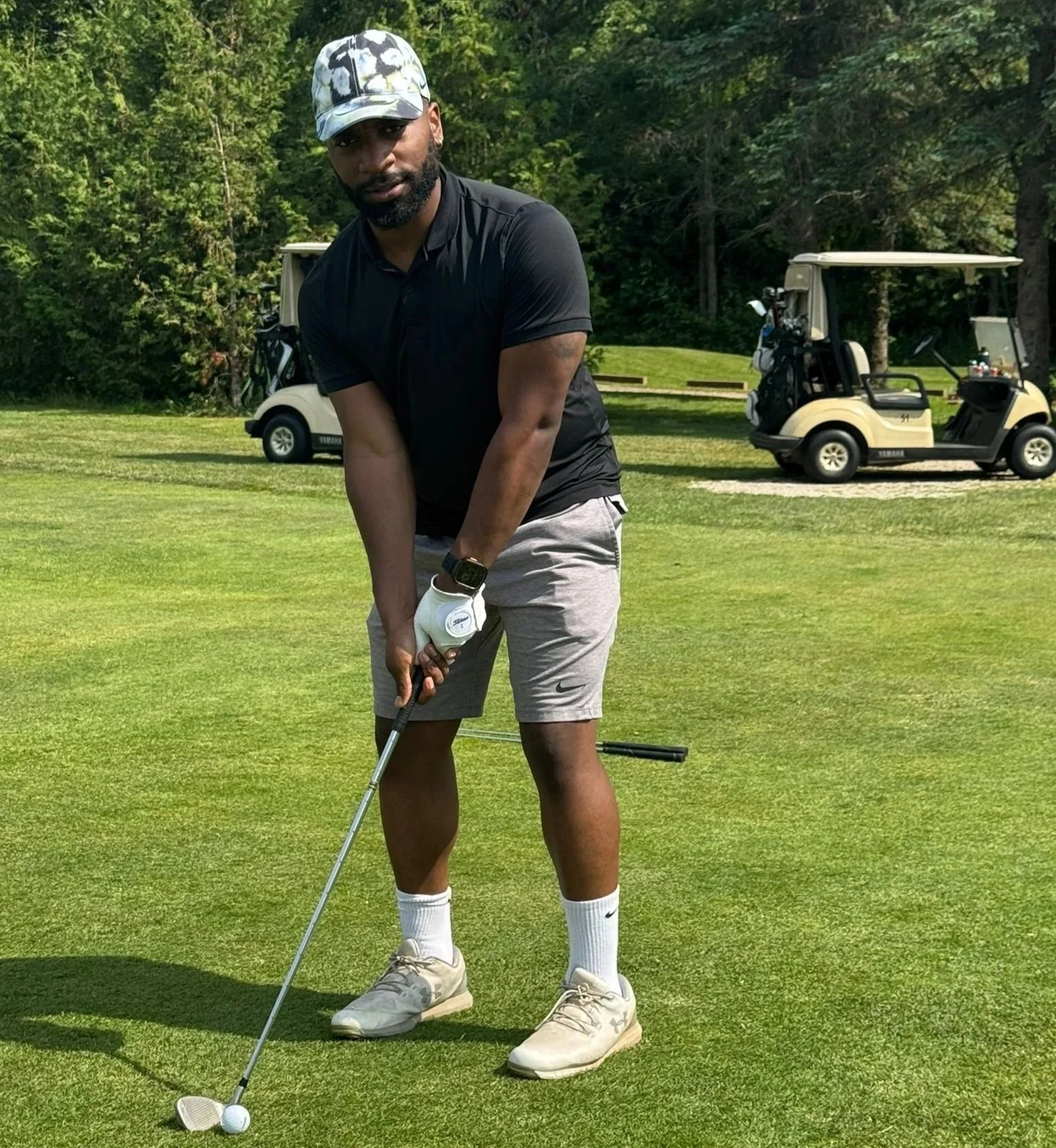Why You Get Sore After Trying a New Sport (And What to Do About It)
New Sport, New Muscles, New Level of Sore
Our physiotherapist Shak recently picked up a golf club for the first time at a friend’s bachelor party. And while he crushed the bonding part of the day, let’s just say his golf game was... a work in progress.
Between pancake-sized divots, baseball-style swings, and a grip that screamed, "I'm new here," it was a humbling first round. But despite the errant shots, he had a blast. And two days later?
He was sore. Really sore. Even though Shak is an active guy who runs, plays soccer, and does CrossFit regularly, this new activity left him using our clinic’s ice machine between patients.
Which brings us to today’s topic:
Why You Get Sore After Trying Something New
When you try a new sport or activity, whether it’s golf, tennis, pickleball, hiking, or even dancing, you use your muscles in new ways. That’s why you can feel sore even if you’re already fit.
This is due to something called DOMS: Delayed Onset Muscle Soreness.
DOMS typically shows up 24–72 hours after unaccustomed physical activity. It’s your body’s way of saying, “Hey! That was new! Let me adapt to this.”
What Causes DOMS?
Unfamiliar movement patterns: Swinging a golf club or sprinting for the first time challenges muscles you rarely use.
Eccentric loading: Movements that lengthen muscles under tension (like walking downhill or decelerating after a swing) create tiny muscle tears.
Stabilizer recruitment: Your small, supportive muscles fire like crazy to maintain control during new or unbalanced movements.
Nervous system demand: Your brain and body are working overtime to coordinate new skills.
The Good News?
This soreness is normal and part of the adaptation process. Next time you do the same activity, you’ll be less sore.
How to Recover Smarter After DOMS
Whether you're just getting into golf or picked up a summer beer league, here’s how to reduce soreness and bounce back faster:
1. Hydrate: Water helps flush out inflammation and deliver nutrients to recovering muscles.
2. Keep Moving (Gently): Light walking, stretching, or mobility work keeps blood flowing and reduces stiffness.
3. Prioritize Sleep: Your muscles do most of their repair work while you sleep. 7–9 hours a night is a game-changer.
4. Use Recovery Tools: Compression boots like our Normatec system or our cryotherapy machine help speed up the healing process.
5. Get Hands-On Help: Massage, manual therapy, and physiotherapy can help clear up lingering tightness and soreness.
If you're dealing with persistent pain, don't tough it out, book a free discovery visit to see what’s going on under the surface.
Intimidation Shouldn’t Stop You From Getting Started
Shak almost didn’t go on that golf trip. Not because he didn’t want to, but because the idea of playing a new sport, badly, in front of friends? It was intimidating.
But he did it anyway, and that’s the reminder here:
You don’t have to be good to get started. You have to start to get good.
If you’ve been thinking about trying something new, go for it. You might be sore. You might look a little awkward. But you’ll be proud you gave it a shot.
And if your body needs a little help along the way, we’re here for that too.
Want to meet the guy whose swing inspired this blog? Click here to learn more about Shak
Ready to get back to doing what you love? Book a session with our team today!
📍 710 Dorval Dr Unit 520, Oakville, ON
📞 (289) 835-2949
💻 https://www.elevaterehabilitation.com/

